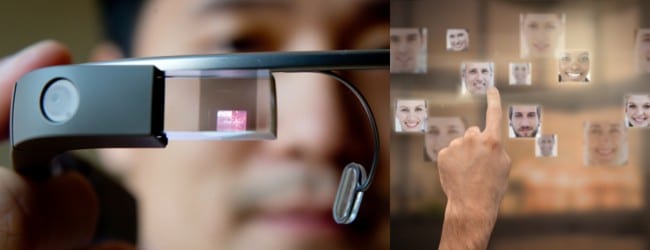
Doing good for passion
5 February 2015
SELLING EMOTIONS – the secret of successful salespeople
20 February 2015Software that reads facial expressions: watch out for misinterpretations!

We would all like to acquire the skill of reading the emotions of others: by observing facial expressions we can obtain valuable information from our interlocutor.
We would like to acquire this skill, perhaps optimising learning time, or even bypassing it.
From these considerations, many companies are investing in designing software that can read facial expressions and behaviour for us. We can compare this moment in history to the time when we invented the scientific calculator to avoid mentally performing complex mathematical calculations.
For more information:
But is it really so easy to replace the human being in understanding the behaviour of another human being?
Applicative research concerning psychology, marketing and neuro-marketing can benefit from such software applications: think of face analysis via web-cam, in order to define whether a particular stimulus (projected video, sound or other), provokes emotional reactions in the user.
Companies investing in advertising are interested in knowing in advance whether or not their product, commercial or creative project has appeal in the potential buyer or user of the service.
The applications mentioned in the articles enlighten us on how progress is benefiting the analysis of human behaviour.
Think of the project a famous car manufacturer is investing in that will allow the car to recognise when the driver is too tired or too angry to drive. Or the goggles worn by the Dubai Police Force, which can decode facial expressions and pick up on the emotions of people being questioned.
But, sometimes, using these tools without expert technical advice on the matter leads to users misreading the data.
Human beings are still the most reliable ‘tool’ in the analysis of facial expressions, as they can better contextualise and interpret each human mimic than software.
When software is completely relied upon to recognise facial expressions and humans are content to process only the final data that emerges, potential errors in the interpretation of behaviour may be hidden behind these statistical output numbers and graphs.
In this article, we explain the technical reasons for our conclusion, how an expert analyst of emotional behaviour can help in the correct use of these software tools, and how basic this technical advice is in order to avoid macroscopic errors of interpretation.
OTEL ERROR, CONTEXT AND SUBJECT BASELINE
Facial expressions can tell us when someone is experiencing a primary and universal emotion (or mixture of emotions), but the fact remains that it is difficult to establish, without asking the questions, the direct cause of the emotion felt by the interlocutor.
If a subject were to see a video and be monitored by a web-cam, due to social desirability linked to the rules of cultural manifestation, they might inhibit their facial expressions as they know they are being filmed (“men do not cry”; “with a camera filming me, it is appropriate to be composed and measured”).
A final aspect concerns the particular characteristics of each individual (his or her baseline). A person might perform certain habitual behaviours that cannot necessarily be correlated with a precise meaning (e.g. certain facial expressions such as: frowning; sucking the lips inside the mouth; wrinkling the nose when laughing; lifting the upper lip when verbally pronouncing certain vowels or consonants). A software, since it cannot track the subject’s baseline in every context, may fall into error by evaluating these subtle expressions as an indicator of activated emotion.
STATIC CHARACTERISTICS OF SUBJECTS’ RESTING FACE
A FACS-certified coder (Facial Action Coding System) knows that before analysing any facial expression of the interlocutor, it must always analyse the neutral face.
What does the face communicate when it is at rest?
What kind of information do we draw from the neutral face, regardless of the movement of the facial muscles?
According to Ekman, the face has four types of signals, capable of conveying information:
– static: more or less permanent aspects of the face. Examples include: skin pigmentation (colour); the shape of the face; bone structure; cartilage; fat deposits; the size, shape and position of features (e.g. eyebrows, eyes, nose, mouth).
– The shape of the face is also known as the ‘skin’.
– slow-changing: changes in appearance that occur gradually, over time. Examples are: permanent wrinkles; alterations in muscle tone; alterations in skin texture and pigmentation (in later life).
– rapid: movements of facial muscles that produce transient changes in facial appearance. For example, temporary wrinkles and changes in the shape and position of features (these changes are very fast on the face: they last for seconds or fractions of a second).
– artificial: use of accessories or other things that disguise the usual appearance of the face. The most frequent are spectacles; a long beard; the shape of the hair (fringe or other); the use of cosmetics (to change skin colour, cover wrinkles, etc.); the use of Botox, which gives a ‘stretched’ and youthful appearance to the face, but partially paralyses nerves and muscles, affecting the ability to make facial expressions.
There are also people who have the corners of the mouth naturally turned downwards or upwards, people whose bags under the eyes or the opening of the upper eyelids can be misinterpreted as muscle activations. Each of these elements must be considered in our analysis, along with slowly changing signals (permanent wrinkles) that can mislead us. In addition to the fact that many artificial signals (fringe, ‘hipster’ glasses, thick beard), may cover certain parts of the face.
All these variables have to be considered, and the emotional behaviour analyst knows how to duly take them into account, focusing his attention on each element before concentrating on the quick signals (facial expressions and micro-expressions) that may be linked to specific emotions. We know that no software is currently able to consider all these elements with such precision and elasticity of reasoning.
INVOLVING AND POSTURAL MOVEMENTS OF SUBJECTS
Whoever watches a video or stimulus, as long as they are not tied to a chair or armchair (which is not exactly ethical or comfortable), moves.
It is human, natural and inevitable.
He may scratch his nose, tilt his head, move forward or backward with his torso.
The human observer does not lose focus on the subject fortunately, and encodes and interprets the detected behaviour without problems.
A static web-cam, on the other hand, can interpret a movement as a change in musculature.
For example, if looking at the web-cam, with a frontal view, we tilt our head towards the chest, a previously ‘horizontal’ mouth may appear ‘smiling’.
The risk of using such software exclusively when analysing human emotions is to create methodological errors.
The speed in obtaining the result, is not always rewarded by the validity and reliability we are looking for.
The emotional behaviour analyst is also better able to contextualise and trace the real-time baseline of the interlocutor, and simultaneously observe 5 channels of communication.
Availing of an expert to advise on the data captured by the software exponentially increases the actual goodness of the results for the intended purposes.
To date, the contribution of a properly trained expert cannot be ignored.
But who knows where research will go in the future?!
Diego Ingrassia


